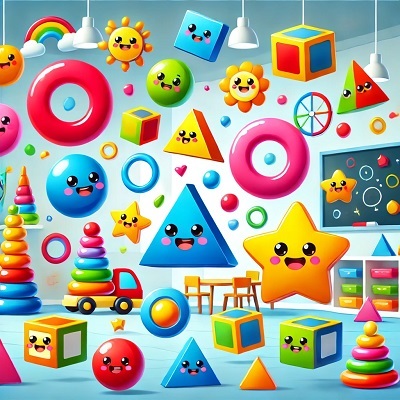Space Rocket Drawing and space-related games are powerful tools for fostering a child’s interest in space technology and exploration.
Also, we will discuss eight key points that explain why these activities are valuable, how they contribute to learning, and why space education is essential for children.
Step-by-Step Guide for Space Rocket Drawing:
Drawing space rockets is a fun and creative way for kids to learn about space! Here’s a simple guide for children to make their own Space Rocket Drawing and explore space-themed games.

Materials Needed:
- Drawing paper
- Pencils (HB and 2B)
- Markers or crayons
- Ruler
- Eraser
Step 1: Draw the Rocket’s Body
Start by drawing a tall, narrow triangle for the rocket’s main bodyThis is where the astronauts sit!
Step 2: Add the Rocket’s Fins
At the bottom of the rocket, draw two triangles on each side for the fins, which help the rocket fly straight.
Step 3: Draw the Nose Cone
At the top of the rocket, draw a curved dome or pointy triangle for the rocket’s nose.
Step 4: Add Windows and Details
Draw small circles or ovals along the body for the windows where astronauts can look outAdd flames at the bottom for a realistic effect!
Step 5: Color Your Rocket
Use crayons or markers to make your rocket colorfulRed, blue, and yellow are perfect colors for a space adventure.

Final Touches for Your Drawing
Here are some final touches kids can add to their Space Rocket Drawing to make it extra special:
- Background Details: Add planets, stars, and moons to create a space sceneThey can draw Saturn’s rings or a comet streaking across the sky.
- Color Gradients: Use blending techniques with crayons or markers to create a more realistic space look for the sky and flames.
- Shading and Highlights: Teach kids to add shading to the rocket’s body and highlights on windows to make the drawing more three-dimensional.
- Personal Touch: Add an astronaut or flag with their name on the rocket!
These small details will elevate their artwork and encourage imagination.
Fun Space Games:
After your Space Rocket Drawing, try playing fun space-themed games where you can learn about astronauts, planets, and space missions!
With these simple steps, you can explore the universe by creating your own rocket and having endless fun learning about space!
5 Games and Activities Related to Space Technology
Here are five games and activities that parents and teachers can use to teach children about Space Rocket Drawing while making the learning process fun and interactive:
1Design Your Own Rocket
- Kids draw their own space rockets using the steps from the Space Rocket Drawing tutorialEncourage them to use imagination to add features like thrusters or astronaut cabins.
2Rocket Launch Simulation Game
- Create a pretend rocket launch with paper rocketsUse balloons for the engine power and launch them by releasing the airThis activity teaches how rockets move.
3Planet Matching Game
- Pair different planets with rocket drawingsFor each planet, children draw a unique rocket that can visit that planet, learning about the solar system.
4DIY Paper Rockets
- Children create 3D rockets using paper, scissors, and glueThey can decorate the rockets and learn about rocket parts while building them.
5Astronaut Dress-up Game
- Combine drawing and role-playing by having children dress up as astronauts, then create space rockets they would flyThis helps them visualize space travel and its requirements.
These games and activities help children learn about space, rockets, and creativity through hands-on engagement!
Why Space Rocket Drawing is Important for Kids 8 Points
In today’s age Space Rocket Drawing allows kids to express their creativity by designing their own rockets, planets, and space scenesChildren love to imagine what the vast universe holds, and through drawing, they can give life to these ideas.

1Encourages Creativity and Imagination
Space-themed games, where they pretend to be astronauts or rocket engineers, further ignite their imaginative power.
This kind of creative freedom is crucial for developing problem-solving skills and expanding a child’s vision of the world beyond.
2Enhances Knowledge of Space Technology
Children are naturally curious about the unknown, and space technology is an intriguing subjectThrough Space Rocket Drawing, they learn about rockets, satellites, and the different stages of a rocket launch.
Space-related games teach concepts like gravity, space travel, and how astronauts live in space.
These activities are not just fun; they introduce children to basic engineering and scientific concepts that are foundational for space exploration.
3Teaches Basic Science Concepts
Space-themed drawings and games often cover scientific principles, such as how rockets work, the concept of orbits, and the role of gravity.
When children engage in Space Rocket Drawing, they naturally inquire about how rockets launch into space, how planets revolve around the sun, and what the stars are made of.
Through interactive space games, they can see these concepts in action, offering hands-on learning that helps them grasp the basics of physics and astronomy.
4Boosts Critical Thinking and Problem-Solving
When children are tasked with creating a space rocket through drawing or navigating a rocket in a game, they engage in problem-solving and critical thinking.
They learn to think logically about the rocket’s structure, how it will move, and how different parts work togetherSpace Rocket Drawing teaches children to plan and execute, while games allow them to apply these ideas, enhancing their cognitive skills.
5Develops Motor Skills
Drawing, particularly detailed drawings like Space Rocket Drawing, improves a child’s motor skillsHolding and maneuvering a pencil or crayon develops hand-eye coordination and precision.
These skills are further enhanced when children build rockets out of materials like paper or cardboard in crafting activities related to space education.
Similarly, space-themed video games, where kids must control rockets or spaceships, help refine their fine motor skills and reaction time.
6Promotes Curiosity About Space Exploration
One of the greatest benefits of space-related activities is that they spark curiosity about space explorationSpace Rocket Drawing helps children visualize what rockets and space missions look like.
Space games that simulate launches or moon landings give them a sense of what real astronauts experienceThis early interest in space exploration can motivate them to learn more about space agencies like NASA, the moon landings, or even future space missions to Mars.
7Prepares Children for Future STEM Learning
Incorporating Space Rocket Drawing into a child’s activities is an excellent way to introduce them to STEM (Science, Technology, Engineering, and Math) concepts.
Drawing rockets, understanding their parts, and playing space exploration games encourage an interest in engineering and technology.
These activities provide the groundwork for future studies in subjects like physics, engineering, and computer science, which are critical for space technology careers.
8Strengthens Focus and Patience
Drawing detailed pictures of rockets and space scenes, as well as engaging in space games, requires concentration and patience.
Children learn to stay focused as they carefully draw the various components of a rocket, such as boosters, engines, and fuel tanksSpace-related games often have levels of difficulty that require persistence and strategy.
As they work through challenges, they develop perseverance, which is crucial not just for space exploration but for life in general.

Why Space Education is Important for Children
Introducing children to space education is essential in today’s rapidly advancing technological worldSpace exploration is no longer a distant dream but a reality that will shape the future.
By learning about space through activities like Space Rocket Drawing and space games, children gain a sense of the universe’s vastness and humanity’s place within it.
Space education also teaches children about teamwork, innovation, and explorationThese are the values that inspire future scientists, engineers, and space explorers.
When children create their own Space Rocket Drawing, they’re not just drawing—they’re thinking critically about the design, the purpose of each part of the rocket, and how it will launch into space.
This imaginative process lays the foundation for future learning and exploration.
Space Rocket Drawing and Games: The Gateway to Space Technology
Space Rocket Drawing and space-themed games provide kids with an engaging way to learn more about the universe and space technology.
Through these activities, they understand how rockets function, the role of astronauts, and the importance of space missions.
Drawing rockets allows children to visualize the structure and purpose of spacecraft, while games provide an interactive way for them to experience what space exploration might be like.
By engaging in Space Rocket Drawing, children develop a deeper connection with the idea of space travel, encouraging them to ask questions, seek knowledge, and think critically about the future of space technology.
Space games simulate real-life scenarios where kids can experience launches, docking at space stations, or even landing on distant planets.
This mix of creativity and interactive learning opens their minds to the endless possibilities of space exploration.
Conclusion
Incorporating Space Rocket Drawing and space-related games into a child’s learning process is an effective way to make space education fun and engaging.
These activities not only teach important STEM concepts but also nurture creativity, problem-solving, and curiosity.
As children continue to explore space through drawing and games, they may one day be inspired to contribute to the future of space technology, becoming the next generation of astronauts, engineers, and innovators.




[…] Most Popular:- Learn Space Rocket Drawing & Best Games […]
[…] Read in Popular:- Learn Space Rocket Drawing & Best Games […]